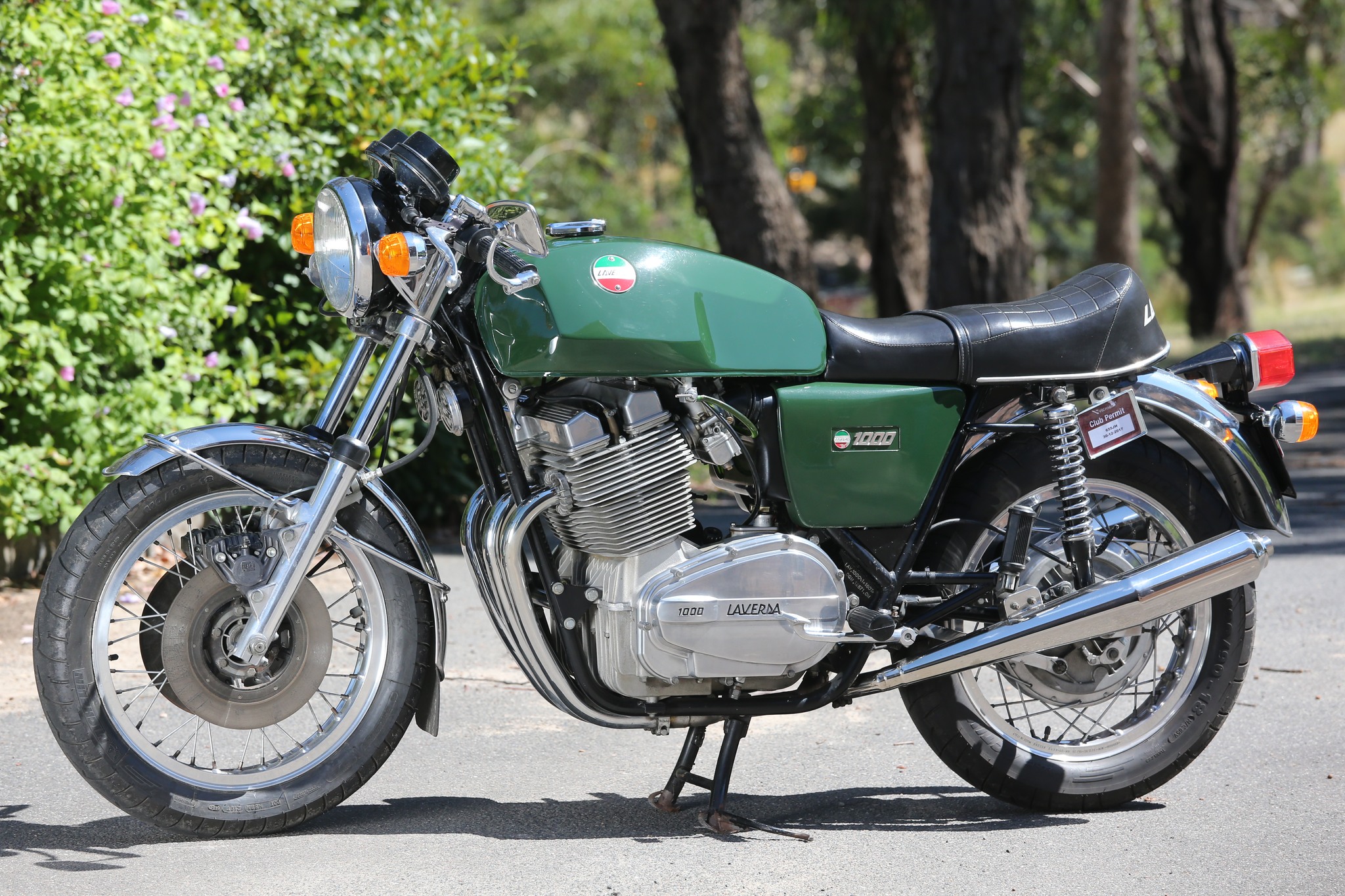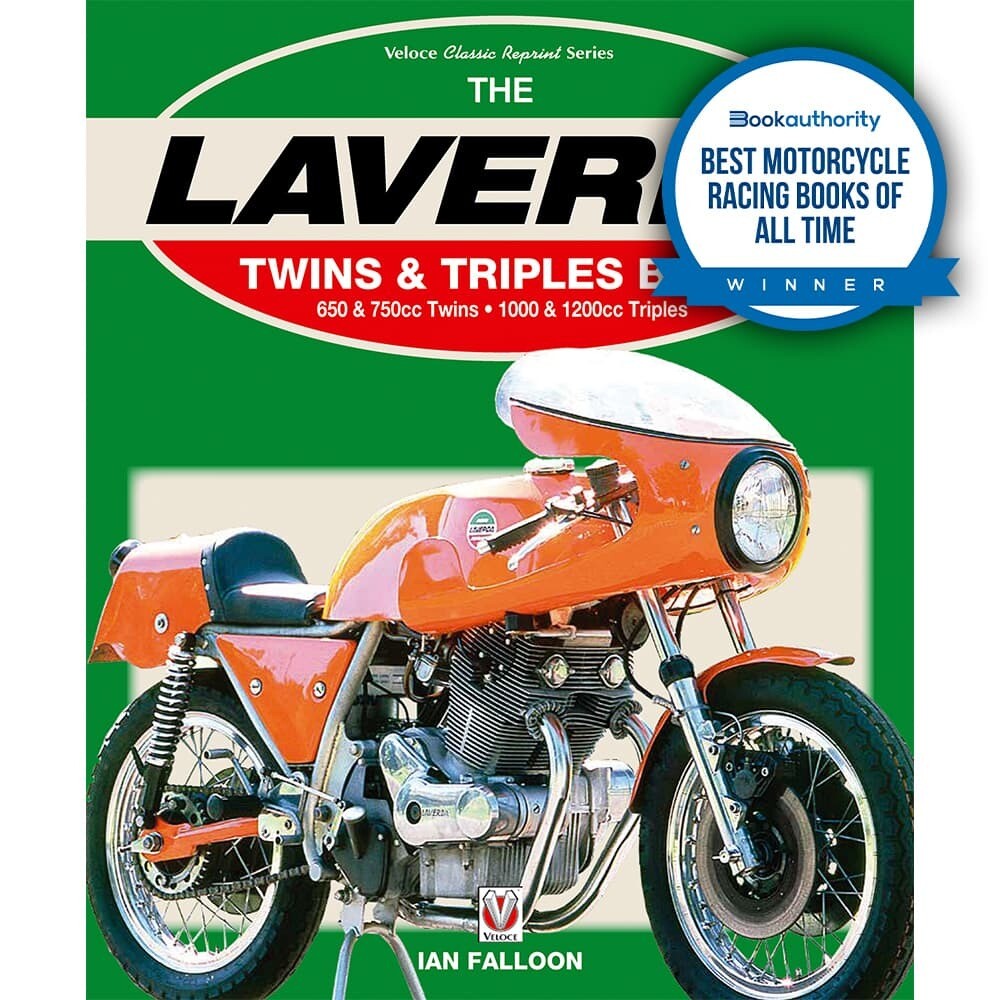Motorcycle Investor mag
Subscribe to our free email news
Lost Latins – Laverda 3C
(by Ian Falloon, Nov 2022)

Laverda's
ground-breaking 3C was a big and fast brute of a bike
One of the casualties in the motorcycle world in recent years has been the disappearance of Laverda. Although a small family concern, in the early 1970s Laverda were at the forefront of the Superbike revolution.
Laverda produced their first large capacity bike, a 650cc hyperthyroid Honda Super-Hawk lookalike in 1966, but company boss Massimo Laverda wanted something larger. The 650 grew to 750 but during 1969, with regular production the 750 twin barely underway, Massimo Laverda announced a new 1000cc triple would be ready by the end of the year.
The concept of a large displacement motorcycle was extremely far sighted, with few motorcycles available displacing 1000cc in 1969. And already Massimo envisaged his triple to weigh less than the new Honda 750, with a narrower engine. He was successful on both counts, the new triple weighing 214kg (as opposed to the Honda’s 218kg), with an engine width of 54cm (against the 56cm of the Honda). But as with the earlier 650 twin, the delay between the display of the first prototype and the eventual production version was considerable.
Development was delayed due to the extensive 1971 endurance racing program, and preparation for the move into a new factory on the outskirts of Breganze. Regular production commenced some years later, in early 1973. This was due to industrial strikes that afflicted all Italian industry at that time.
As a family business in a small town in northern Italy Breganze was isolated from many industrial problems but they still used many components from outside suppliers. In 1973 the Laverda 1000 was one of the largest displacement and fastest sporting motorcycles available, but was almost impossible to obtain. Most countries received a quota of only two early machines.
Luciano Zen was a singularly courageous engineer when it came to choosing the Laverda 1000’s crankshaft layout. All other triples (MV Agusta GP 500s and the Triumph Trident) used crankpins 120 degrees apart, but the Laverda placed its crankpins 180 degrees apart. This was intended to solve the problem of rocking vibration and lateral forces on the crankshaft bearings present in the usual 120-degree triple.

Above: Period 3C brochure
It provided the effect of a British 360-degree vertical twin with an extra cylinder in the middle and the 1000 was always a violent shaker. In 1982 Laverda changed to the more usual 120-degree crank, but some of the brutal rawness of the earlier bike was lost. The crankshaft was a pressed up affair, consisting completely of ball and roller bearings, while twin overhead camshafts operated the two valves per cylinder. As on the 750 the camshafts were chain driven, as was the primary drive. Everything about the triple was solid and massive.The crankcases were not intricate die-castings, but strong thick walled sand-castings. Instead of the 750’s reliable, but unfashionable and heavy Bosch dynamo, the triple featured a more modern crankshaft-mounted Bosch alternator. Carburetion was by the new series of Dell’Orto PHF 32mm carburettors with accelerator pumps, and the ignition by a new generation Bosch electronic system. Electronic ignition failure was the 1000’s Achilles heel, particularly in wetter countries like the U.K. where water could invade the system.
At a time when 750 cc was considered large, the 1000 3C redefined parameters. Weighing in at 240kg, with an 820 mm seat height, the 3C unashamedly catered for the larger rider.
It was also seriously fast for the day, with a claimed 80 horsepower at 7250 rpm propelling it to 220km/h. And despite its size and weight the big triple really handled. Built in Breganze at the foot of the Dolomites with thousands of kilometres of twisting road on its doorstep, if the Laverda had to do anything well it had to handle.
The heavy duplex steel frame was conventional in design but made to withstand any flex. In many respects the Laverda deviated from the Italian norm. Most Italian manufacturers in the early 1970s sourced all ancillary components within Italy. But Laverda used Japanese Nippon Denso instruments and switches, and German Bosch electrics, including a massive 200 mm headlight.
Laverdas were always high priced motorcycles and Massimo only wanted what he saw as the very best components. Italian companies provided the important running gear; Ceriani suspension, Borrani 18-inch alloy wheel rims, twin Brembo front disc brakes and a Laverda-made 230 mm rear drum brake. Although still not totally reliable, the 1974 1000 3C set the standard for Superbike performance, with a top speed around 210 km/h. While this wasn’t quite as fast as the Kawasaki Z1, the 3C handled and braked better.
The 3C eventually evolved into the legendary Jota, and during the 1980s was developed into the 1000RGS and 1000SFC. By 1986 the Laverda triples were some of the last relics of the 1970s. All were very different to comparable large displacement Japanese motorcycles, but the raw muscle and rough running of the earliest 1000 3C placed it even further apart. The 1000 3C was blatantly loud, uncompromising, and uncivilised; light years away from equivalent offerings from Germany, Japan and even neighbours in Italy.

-------------------------------------------------
Produced by AllMoto abn 61 400 694 722
Privacy: we do not collect cookies or any other data.

Archives
Contact





